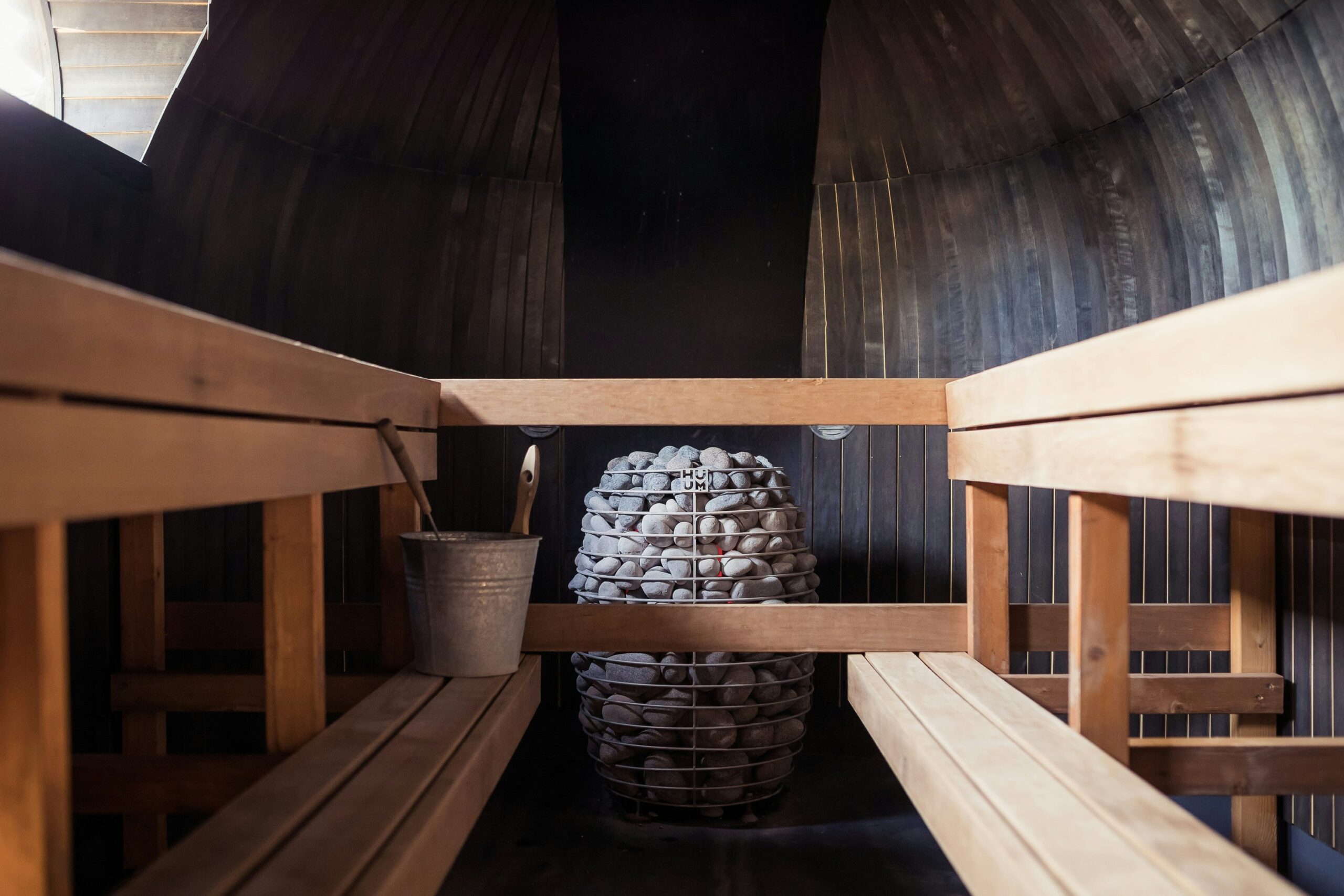Have you ever wondered about the peculiar practice of wearing sauna hats? Perhaps you stumbled upon photos of people in saunas wearing what looks like whimsical felt concoctions on their heads and thought, “What’s going on here?” In the wonderful world of sauna traditions, the sauna hat holds a unique place, and with it arises an intriguing question: Do sauna hats prevent hair from getting wet?
This deep dive into the realm of sauna hats will hopefully clear up any confusion or curiosity you might have regarding their purpose and effectiveness. By the end of this discussion, you’ll have a better understanding of why these hats might be an essential accessory for your sauna experience.
What Are Sauna Hats?
In the simplest terms, sauna hats are head coverings worn by bathers while partaking in sauna activities. Typically made from materials like wool or felt, these hats are designed for use in high temperatures. Upon first glance, the sauna hat might appear as a quaint or even unnecessary accessory, but it serves several practical purposes that contribute to the enjoyment and safety of the sauna.
Origins and History
The tradition of wearing hats in saunas has deep cultural roots, particularly in parts of Europe. In countries like Russia and Finland, where sauna culture is an integral part of life, sauna hats have been used for generations. These hats are not merely a trendy accessory but rather a cornerstone of sauna etiquette and tradition with a history that dates back hundreds of years.
Design and Material
Sauna hats are most commonly made of natural materials like wool or felt. These materials are excellent insulators, capable of resisting heat and protecting the wearer’s head. The designs of sauna hats can range from the purely functional to the artistically elaborate, with some hats featuring colorful patterns or whimsical shapes.
The Functions of a Sauna Hat
To appreciate whether sauna hats can prevent your hair from getting wet, it is essential to understand their broader functions. Sauna hats are not solely for hair protection; they fulfill a range of roles that enhance the sauna experience.
Heat Protection
One of the primary reasons sauna-goers wear these hats is to protect their heads from the intense heat. Temperatures in saunas can reach upwards of 190°F (88°C), and while your body might feel great, the head can become uncomfortably hot. The hat works as an insulator, keeping your hair and scalp relatively cooler and preventing excessive heat exposure.
Hair Protection
Assuming you’ve settled into the steam cloud’s embrace, you might wonder about the persistent state of your hair. Sauna hats serve to protect your hair from the extreme heat, minimizing damage and moisture loss. By acting as a barrier, these hats help preserve the natural oils in your hair and prevent it from becoming dry and brittle.
Sweat Absorption
Let’s not forget that a sauna session is also a sort of all-natural detox; you’ll be sweating quite a bit. The sauna hat absorbs some of the sweat that might otherwise trickle into your eyes or dampen your hair. This feature contributes to a more comfortable and enjoyable sauna session.

Do Sauna Hats Keep Your Hair Dry?
Now, the million-dollar question: do sauna hats prevent hair from getting wet? The answer is nuanced. While sauna hats are not designed explicitly as waterproof barriers, they excel in reducing the overall moisture your hair might encounter during a sauna session.
Insulation vs. Waterproofing
The primary function of a sauna hat is insulation rather than waterproofing. It excels in shielding your hair and scalp from direct heat and excessive sweating. Therefore, it prevents your hair from becoming excessively damp, but it’s important to reset expectations: your hair might still get slightly moist from sweat or steam.
Comparing Materials
When examining the effectiveness of sauna hats in keeping hair dry, consider the material’s properties. Wool and felt have different moisture-wicking and insulating capabilities. Felt, being slightly denser, might provide a bit more warmth and resistance. However, wool is exceptionally breathable and wicks away moisture efficiently, thus offering practical benefits in both heat and moisture management.
| Material | Moisture Management | Heat Insulation |
|---|---|---|
| Wool | Excellent at wicking moisture | Good insulation |
| Felt | Moderate at moisture resistance | Superior insulation |
Protective Benefits for Various Hair Types
Understanding how sauna hats work to protect different hair types can help you determine their potential benefits for your own hair. Not every strand is created equal, and some textures might benefit more from spa hats than others.
Fine and Straight Hair
For those with fine or straight hair, sauna hats can provide protection against the heat, which might otherwise cause the hair to lose volume or feel lifeless. The insulation serves well to maintain your hair’s natural moisture, reducing the risk of dryness.
Curly or Wavy Hair
Curly hair tends to be more prone to dryness, so the protective nature of a sauna hat is especially beneficial. The hat helps retain the moisture balance, preventing curls from becoming frizzy or losing their natural definition due to the sauna’s heat.
Textured or Coily Hair
People with textured or coily hair will find sauna hats to be particularly protective. This hair type often struggles with moisture retention, and the hat’s insulation properties can help preserve the natural oils and prevent hair from becoming dry or brittle.

Alternatives to Sauna Hats
Perhaps you’re not entirely sold on the idea of donning a sauna hat. Thankfully, there are alternatives that can still protect your hair during a sauna session without requiring traditional headgear.
Headbands and Hair Wraps
A breathable headband or hair wrap made of moisture-wicking material can provide some level of protection for your hair. While they don’t offer the same insulation level as a sauna hat, they can prevent excess sweat from dampening your hair.
Natural Oils and Hair Products
Applying a small amount of natural oil, such as coconut oil or argan oil, to your hair before entering the sauna can help lock in moisture and protect your hair from becoming dry. This method complements the protective function of a sauna hat or head wrap.
Incorporating Sauna Hats into Your Routine
If you’re intrigued by the potential benefits of sauna hats, you might consider incorporating one into your regular sauna routine. The process is simple and doesn’t require much adjustment on your part.
Choosing the Right Hat
Selecting a sauna hat requires considering both material and personal preferences. Wool is dependable and offers superior moisture management, while felt provides extravagant insulation. Also, don’t shy away from hats with a bit of character or color; sauna culture embraces individuality and style.
Maintaining Your Sauna Hat
Taking care of your sauna hat is important so that it remains functional and clean. Regularly air it out after use, and occasionally wash it following the care instructions specific to its material.
Complementary Sauna Solutions
To maximize the benefits of your sauna hat, you might pair it with other protective steps. Use a hydrating hair mask or conditioner to maintain hair health. Drink plenty of water and moisturize your skin after the sauna to replenish lost hydration.

In Conclusion
The world of sauna hats is rich with tradition and functionality. While they may not outright prevent your hair from getting wet, these hats offer beneficial insulation and protection against extreme heat. Sauna hats help manage sweat absorption and hair moisture, making them a valuable addition to any sauna lover’s arsenal.
So next time you’re heading into the sauna, consider the merits of a trusty sauna hat—upholding tradition and ensuring your experience is as pleasurable and safe as possible without sacrificing your hair’s health and shine.

